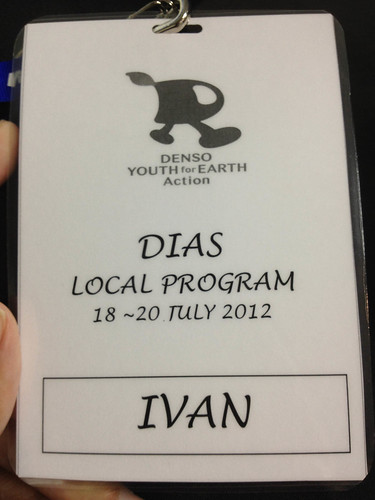
For the last 3 days, I have been involved with DENSO Youth for Earth Action (DYEA), an international programme to support youths in Japan and ASEAN who are passionate about doing something for the environment in their home countries.
In DYEA, each participating country conducts its own local programme between the months of July and September, giving youths the chance to learn about local environmental issues. In the meantime, each participant develops his or her own action plan, which is a project that will help tackle a particular problem, whether it is waste management, energy, clean water, biodiversity or simply raising awareness and providing a platform for other youths to come up with their own projects. Last year, Singapore, Malaysia, Indonesia, Philippines, Thailand and Vietnam were the participating countries.
The next phase of DYEA is the global programme, held in October, where shortlisted candidates from each participating country all come together to learn more about environmental management in a particular country, through fieldwork, site visits, and discussions with stakeholders and local communities. This year, the global programme will be held in Japan. This is also a time to further refine and hone one's action plan, as each participating country will ultimately select one candidate, whose action plan will receive further support from DENSO so that it may be implemented effectively over the course of one year.
Applications for this year's DYEA opened in April, and I was alerted through the Raffles Museum Toddycats network. In fact, Tze Kwan, one of our lead coordinators, participated in DYEA last year. Not only did she have the chance to visit Indonesia to learn from local case studies covering various issues of conservation and fair trade, but her action plan was chosen to be the one to receive support from DENSO in Singapore. So in some sense, I was following in my friend's footsteps.
The local programme was conducted at DENSO International Asia (DIAS), DENSO's Singapore office, in collaboration with Nature Society (Singapore), with Outreach Officer Ter Yang helping to conduct the activities. Sean, a DYEA alumnus from 2010, was also present as a facilitator.
Day 1
It quickly dawned upon me that I was the oldest among the 6 participants; after all, the age limit was 29, so this really was my final opportunity to take part in this programme. Everyone else was an undergraduate; 4 were from the National University of Singapore, with 1 student from Life Sciences, 1 from the School of Design and Environment, and 2 from the Faculty of Engineering, while the final participant was from Communication Studies in Nanyang Technological University.
We started out simply enough, sharing about key milestones in our personal lives, as well as environmental events that left a lasting impression on us. That soon led to speculation about what the future held as far as the environment was concerned. I think I quickly left a last impression on the others, with regards to my passion and level of awareness of biodiversity conservation and other related environmental issues.
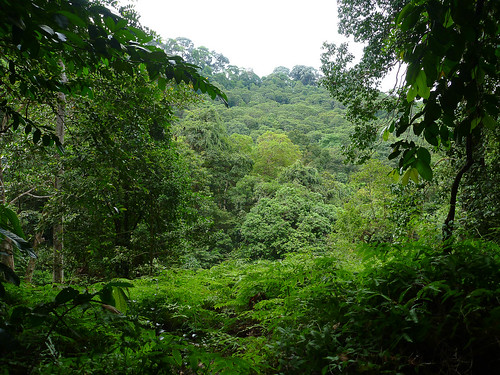
Later that afternoon, we visited Bukit Timah Nature Reserve, where we met up with staff from the National Parks Board (NParks) and learnt about some of the management issues regarding one of our most iconic nature spots. The discussion covered all sorts of problems, from human-wildlife conflict to widening of trails due to trampling by crowds of visitors.
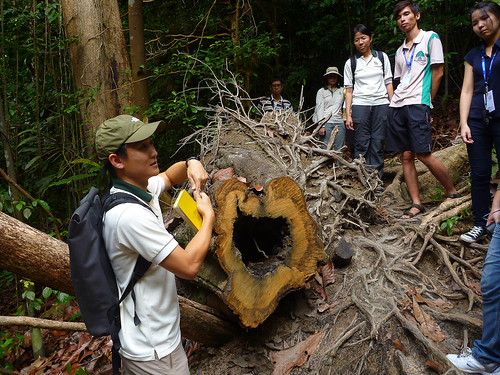
Joey and Wei Ling from NParks Conservation Division shared a lot about some of the threats facing one of Singapore's last patches of primary rainforest. It's funny that I knew both of them before, Joey through a mutual friend, while I've worked with Wei Ling as part of TeamSeagrass. I think they were as surprised to see me as I was to see them!
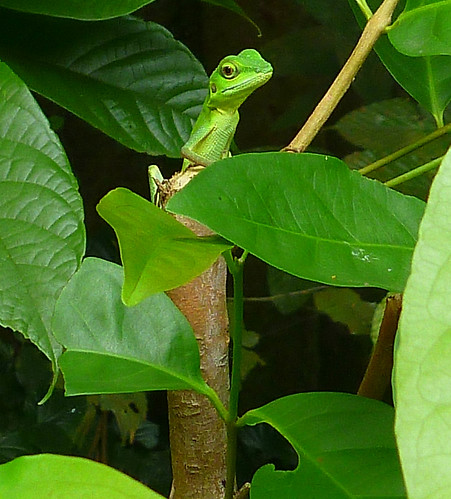
One of the animals we saw in the forest, a young green crested lizard (Bronchocela cristatella).
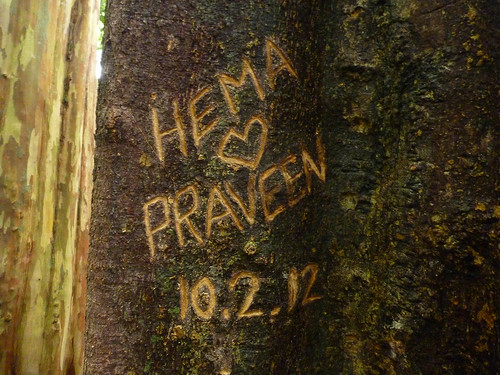
It's appalling to see the damage done by some idiots.
Everyone learnt more about our threatened native biodiversity, as well as the many challenges faced where it comes to conserving our green spaces, from encroachment by surrounding urban development projects and invasive species, to the general lack of awareness and ignorance about Singapore's natural heritage. It was especially interesting when we were asked to name 5 local birds besides mynas, crows, pigeons and sparrows (with Wei Ling saying in jest that I wasn't allowed to answer), and there was a long pause before Yong Kuan chimed in with the names of some of the birds he knew about.
Day 2

Our day began with a visit to the NEWater Visitor Centre, where we learnt about Singapore's management of its water resources.
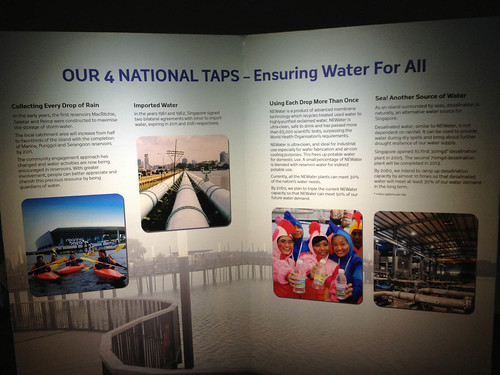
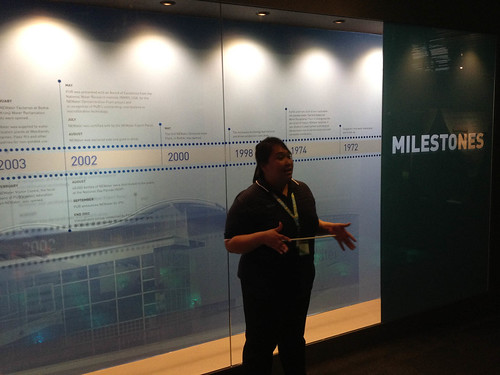
We were led on a guided tour of the facility, and found out more about the technology involved in reverse osmosis.

Water has been so integral to narratives surrounding Singapore's journey as a nation, and it is amazing to see how in the span of a few decades, Singapore has managed to come up with solutions that have greatly lessened the threat of water scarcity. Technology has been a major contributing factor, but the role of ordinary residents in the sustainable use of this precious resource cannot be overstated. At the same time, because of our level of development, it is easy to forget about the problems faced by many communities around the world who lack access to clean water, or the potential problems posed by climate change and ensuing conflicts over water.
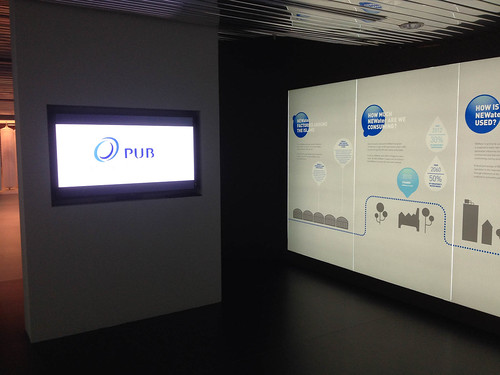
In the afternoon, we had a panel discussion with 2 inspiring people, Bhavani Prakash of Eco WALK the Talk and Green Collar Asia, and Dragos Necula of eco fashion brand Etrican. They shared their own perspectives on how companies can play a role in combating environmental problems, whether it is through corporate social responsibility (CSR) efforts, or by finding ways to green their business. The discussion veered towards other topics over the tea break, with plenty of food for thought about fair trade, resource distribution and inequality, and whether there are ways to fix current models for economic development.
Day 3

The final day of the local programme began on the mudflats of Kranji, where we were introduced to the Horseshoe Crab Rescue & Research Programme being carried out by Nature Society Singapore.
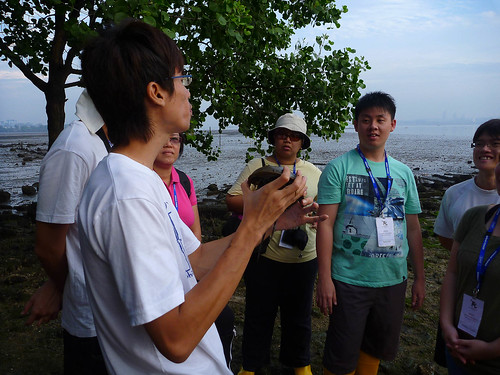
Ter Yang briefed us on how to sex and measure mangrove horseshoe crabs (Carcinoscorpius rotundicauda).
I was truly in my element, traipsing about in my booties and collecting horseshoe crabs.
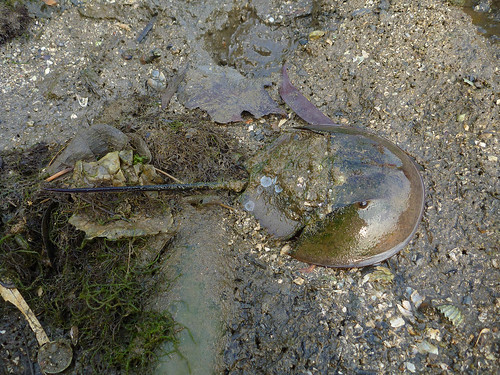
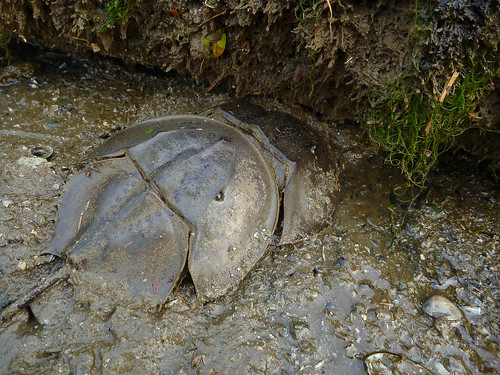
We found many mating pairs.
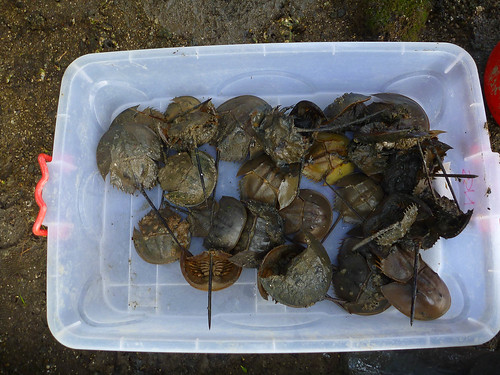
These were just a small fraction of the total number of horseshoe crabs we documented. Indeed, mangrove horseshoe crabs are very abundant here, but as Ter Yang shared with us, this area is unprotected and as a result, could end up being threatened due to future development plans.
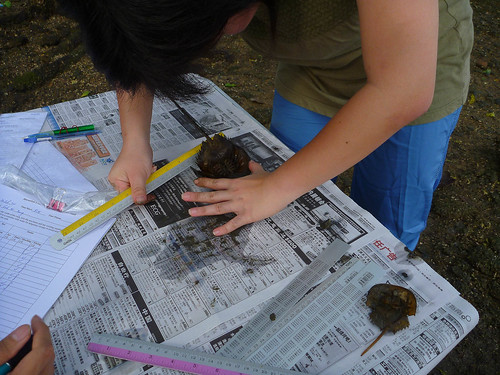
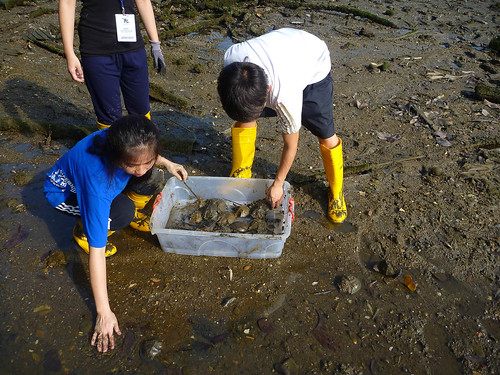
Once the necessary data is recorded, the horseshoe crabs are released.
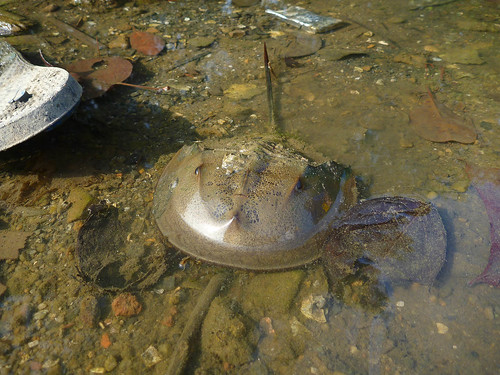
Fortunately, we did not encounter any instances of horseshoe crabs trapped by abandoned driftnets or fishing lines. I think everyone who works in the mangroves knows all too well about the time 300 entangled horseshoe crabs were freed from a discarded net in Mandai.
After washing up, we headed back for the presentation of our individual action plans. Each one of us had an interesting area of focus, from raising awareness about clean energy by organising competitions among students, to conservation of native flora through the creation of art using leaf printing. The judges, consisting of staff from DENSO, retired to make their final selections on who to send to Japan for the global programme, while Ter Yang shared some of the winning videos from the recent Through Green Lenses, a mini-documentary and film-making competition that was held earlier this year, focusing on the diverse habitats present on Pulau Semakau.
Full disclosure: I happen to know Zestin and Eunice, the people who made this video, as well as David, who provided the narration.
The entire programme concluded with a nice dinner at Kintamani Indonesian Restaurant at Furama RiverFront Singapore, where everyone could relax and chat after the events of the last 3 days. And at the end, the results were revealed: I am among the 3 participants selected to take part in the global programme in Japan!

It's really wonderful to be given the opportunity to not only travel overseas, but also to exchange ideas and learn from people elsewhere in Asia. Of course, there is the hope that with DENSO's support, the implementation of my action plan can be made easier. I'm not exactly ready to share much more about it, but suffice to say that it has something to do with outreach and educating people about Singapore's urban biodiversity.
Many environmental problems are global, but need to be tackled at the local level first if we are to make any headway. It's easy to look at broader issues of climate change and biodiversity loss and waste management, and rage against the inaction of governments or the evil of corporations and industries, but forget how individual actions can help effect change. One may have grand ideas of saving the world, but dreaming big doesn't mean anything if one doesn't also have the patience or resourcefulness to start small, and slowly build up from there.
Over the last 3 days, I've been given the chance to consider issues pertaining to the environment from different perspectives. Some of the ice-breaker activities and games enabled me to imagine scenarios in which I may be a stakeholder or activist, or even a contributor towards a particular problem, and to examine some of the thought processes and relationships that can cause a project to succeed or fail. Through the site visits, I've seen various examples of how both government bodies and non-government organisations try to manage a particular aspect of the environment, whether it is protecting our nature areas or encouraging people to take responsibility for the conservation of our limited resources. And the panel discussion proved to be especially insightful, to see how people can be driven to want to do business in a manner that helps alleviate some of the pressures on the environment, even if the benefits may not be immediately apparent to the consumer.
A big thank you to Audrey, Pauline and Su from DENSO, Sean from the DYEA alumni, and Ter Yang from Nature Society (Singapore) for conducting the programme. Tze Kwan gave me lots of advice and encouragement, and provided lots of moral support, while Gladys gave a vote of confidence back when I was still considering whether to apply for DYEA in the first place.
And to my fellow participants Yong Kuan, Yang Xuan, Bailey, Genevieve, and Shuqi, I hope that the past 3 days have been meaningful and enlightening. I may have the age and experience, but as undergraduates, you have the advantage in terms of energy, imagination, and free time (especially during semester breaks). Even though the DYEA journey has already come to an end for some of us, I hope that each of us will never stop exploring opportunities to learn and read up about the issues that plague our world, and to find ways to become advocates and do our part for a particular cause.
I'm really looking forward to learning more from my time in Japan, and hope that with such invaluable experience, I'll be able to contribute even more back here in Singapore.